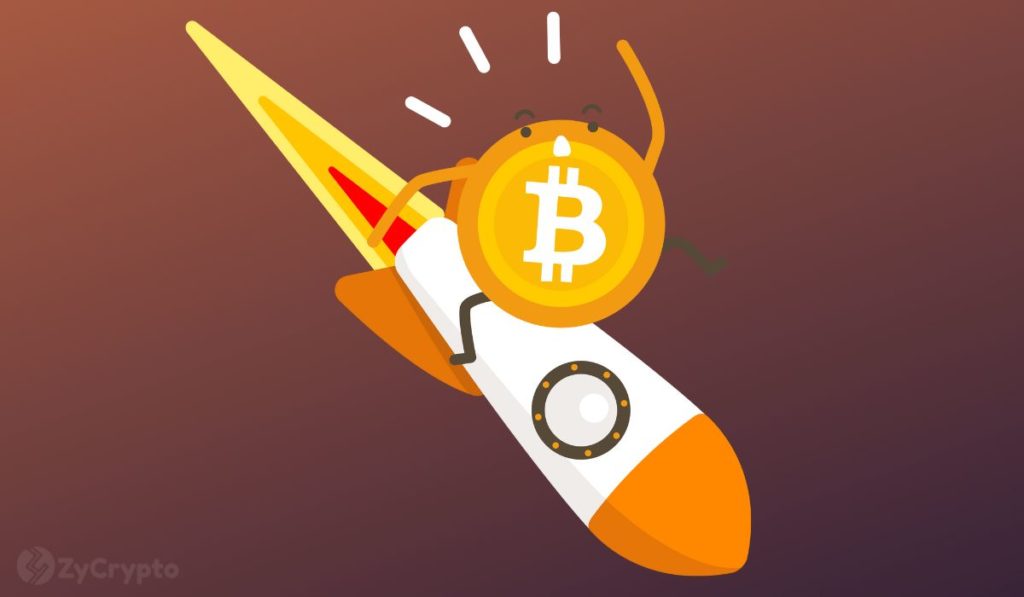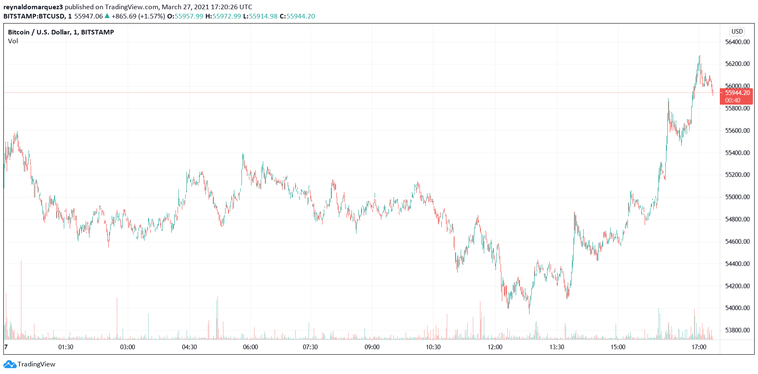
2024-3-18 15:18 |
If you’re a keen reader of CryptoSlate, you may have noticed that our editorial style avoids referring to Bitcoin as ‘crypto.’ This isn’t accidental, and the choice was not pedantic. We believe that Bitcoin stands apart from other digital assets we traditionally classify under the broad term ‘crypto.’
I stand behind this vision; however, it has not always been the case. My profile describes me as a “blockchain maxi,” and this was born, I now believe, from a critical misunderstanding of the intangibles of Bitcoin.
One of the first articles I wrote in this space promoted the concept that a new technology will eventually overtake Bitcoin. I compared Bitcoin to dot-com companies like Alta Vista, AOL, and Lycos. In July 2021, I wrote,
“The Facebook, Google, Amazon, and eBay of the decentralized ledger space haven’t been born yet! I want to watch out for the next game-changing tech projects… because they are coming, and it’s highly likely that it is not going to be the projects most people are betting on today.”
My central thesis back then was that we were earlier than many at the time believed and that decentralization was the key to our digital evolution, not Bitcoin itself. I even thought that Bitcoin had the potential to disappear completely.
“My point? We are earlier than you might think to this next stage in our digital evolution. Could bitcoin disappear completely? Absolutely. Do I expect that to be the end of decentralized ledger-based data solutions? Not a chance. We are at a tipping point.”
While I still believe we are at a “tipping point” and that we are still “early” in the evolution of Bitcoin, I don’t necessarily believe we are as early for “crypto.” Crypto adoption is happening, and digital assets are becoming integrated into an increasing number of FinTech applications. I see the path to the financialization of the internet through Web3 as fairly clear-cut from where we are right now. However, the path to reaching Bitcoin’s final form has a much longer timeline.
What made me change my mind? I’m not sure there was one thing, but several recent SlateCast guests significantly impacted my thinking. Margot Paez, Ryan Condron, Alex Fazel, Jason Fang, and Lee Bratcher all helped reframe how I see Bitcoin. There’s a saying at CryptoSlate that many of us have become “more of a Bitcoin maxi every cycle,” I certainly feel that right now as we approach the halving.
Bitcoin vs. Crypto‘Crypto’ is short for cryptocurrency, a term not used in the Bitcoin whitepaper but in a 2010 forum post by Satoshi where he described Bitcoin as a “P2P cryptocurrency.”
“Announcing version 0.3 of Bitcoin, the P2P cryptocurrency! Bitcoin is a digital currency using cryptography and a distributed network to replace the need for a trusted central server. Escape the arbitrary inflation risk of centrally managed currencies!”
Thus, we should rightly describe Bitcoin as a cryptocurrency, but the evolution of the space has led to the rise of ‘crypto’ as an industry in its own right. So, while Bitcoin is a cryptocurrency, it should not be included under the banner of the ‘crypto’ industry, in my humble opinion. Here’s why.
I see three distinct entities in the digital asset space.
Bitcoin Ethereum, Polygon, Solana, etc. MemecoinsI tend to align assets like Ethereum, Polygon, Solana, and others as akin to tech plays in the stock market and memecoins as simply gambling, while “Bitcoin is a technological tour de force.” Non-Bitcoin blockchains and memecoins are both ‘crypto’ to me. However, projects like Ethereum have extremely strong fundamentals, while memecoins are 100% speculative. For this reason, I believe memecoins are doing more harm than good to ‘crypto’, which is why they have no place in the same conversations as Bitcoin. This differentiation is critical; viewing Bitcoin simply as another ‘crypto’ misses its unique value proposition.
Bitcoin is a $1.3 trillion asset that dictates the price movement of a further $1.2 trillion of ‘crypto,’ so its influence on the market cannot be overstated. Its movements set the pace for the entire sector, with other cryptocurrencies often reacting in tandem. The occasional lag in this synchrony, typically no more than a week, highlights Bitcoin’s central role in market forces. This interdependence identifies my flawed argument that Bitcoin’s technological underpinnings might eventually be its Achilles’ heel. History is replete with examples where superior technology did not guarantee market dominance; the network effect and the comprehensive value proposition of Bitcoin far outweigh the advantages of newer technologies.
Critics, once including myself, often highlight the supposed technological inferiority of Bitcoin compared to newer blockchain projects. However, this critique overlooks the complex interplay between technology, adoption, and the network effect. Bitcoin’s ascent is not merely a product of its technical features but a combination of cultural, social, and economic factors that have solidified its position. The argument that newer, technologically superior cryptocurrencies could usurp Bitcoin’s throne fails to account for the unique circumstances and the zeitgeist that facilitated Bitcoin’s rise.
The miracle of BitcoinWhen asked about selling Bitcoin for profit, the CEO of MicroStrategy, Michael Saylor, recently remarked, “There’s a word for people who store value in fiat. We call them poor.” By this, he means that the way people think about Bitcoin as a store of value is critically flawed. His statement emphasizes Bitcoin’s potential as a future bedrock of global value, a sentiment I share. Selling Bitcoin for profit only makes sense when your frame of reference is set to a low-time preference. So, while some argue that the era of being “early” to crypto might have passed, the journey for Bitcoin, I believe, is far from reaching its peak.
Bitcoin’s societal, technological, philosophical, and truly viral underpinnings set it apart. Bitcoin is a globally distributed event sequencer and an incentivized decentralized timestamp ledger with a reward mechanism intrinsically tied to our planet’s finite resources. Along with its sovereignty from any nation, corporation, or individual and being operationally viable from any energy-generating location on Earth, these features are crucial to our planet’s needs.
So, despite Bitcoin’s significant strides, its full potential is far from being realized. The general perception still narrowly confines it as a mere digital store of value or a medium of exchange. However, its power also lies in its ability to irrefutably prove that a digital event has occurred, serving as a foundation for innovations that extend well beyond traditional financial applications.
Yes, as a hard store of value, it is unparalleled, and its base infrastructure can serve as the foundation for global payment networks. Yet, its role is not just in finance but in securing critical data with precise timestamping capabilities.
The journey of Bitcoin has been nothing short of miraculous. Its resilience in the face of numerous challenges and attempts to undermine its value is a testament to its strength and the commitment of its community. Bitcoin transcends technology; it embodies a social-cultural phenomenon that has carved out a significant footprint in the digital age. Its survival and growth defy the odds, proving its intrinsic value and pivotal role in the digital asset ecosystem.
As we delve deeper into the nuances of Bitcoin and its ecosystem, it becomes evident that its journey is unmatched. The confluence of technology, finance, history, culture, and societal movements has birthed a phenomenon that defies simple categorization. Bitcoin’s story is one of resilience, innovation, and an unwavering belief in the transformative power of decentralized finance. It stands as a talisman for the future, promising a new paradigm where value, trust, and freedom are redefined for the modern era.
Bitcoin cannot be reproduced.While technological innovation is crucial, the depth of Bitcoin’s integration into society’s financial and cultural fabric provides it with an unmatched fortress of resilience. The notion that upcoming cryptocurrencies could eclipse Bitcoin by virtue of better technology disregards the intricate tapestry of factors contributing to Bitcoin’s enduring relevance.
The discourse surrounding Bitcoin and the potential for newer, technologically advanced cryptocurrencies to supplant it opens a broader conversation about innovation, adoption, and the enduring nature of foundational technologies. Bitcoin’s narrative, interwoven with technological milestones, cultural shifts, and a revolutionary approach to value exchange, offers a profound case study of technological adoption trends and the lasting impact of first-mover advantage coupled with deep-rooted network effects.
Bitcoin, in its essence, represents an intersection of factors that cannot be replicated. Its birth, rise, and enduring presence are attributed to a unique blend of technology, societal need, timing, and a bit of luck. This mix has solidified its position in a way no subsequent technology or cryptocurrency can emulate.
Bitcoin transcends mere technology or financial innovation; it’s woven into our digital era’s cultural and social fabric. It embodies a movement, a shift in perception towards value, sovereignty, and decentralization. This cultural resonance strengthens its position, making comparisons with other assets or cryptocurrencies about technology or utility somewhat myopic. Bitcoin has ignited a revolution extending beyond its protocol, influencing global financial systems, governance models, and the notion of money.
Consider, for instance, the profound implications of Bitcoin in countries grappling with hyperinflation and financial instability. In these regions, Bitcoin is not merely a speculative asset but a lifeline that offers individuals and businesses an alternative to crumbling fiat currencies. By facilitating secure, borderless, and decentralized transactions, Bitcoin empowers people with financial sovereignty, enabling them to preserve and transfer wealth independently of faltering financial systems. This tangible impact demonstrates Bitcoin’s utility and solidifies its standing as more than just another digital asset; it is a beacon of hope for financial inclusivity and resilience.
While some argue that Bitcoin’s technology may be surpassed, they overlook the adaptability and evolutionary potential within the Bitcoin ecosystem. The network’s underlying principles—decentralization, security, and open participation—coupled with a robust community of developers ensure that it continues to evolve. Moreover, innovations like the Lightning Network exemplify how Bitcoin can adapt, addressing scalability and usability while preserving its core values.
The debate around consensus mechanisms, remarkably the comparison between Proof of Stake (PoS) and Bitcoin’s Proof of Work (PoW), further highlights Bitcoin’s distinctiveness. PoS, for all its efficiencies, introduces different trade-offs, notably in security and decentralization. Bitcoin’s PoW consensus is a foundational element of its security model and economic principles, tying the digital to the physical world in a manner PoS systems have yet to replicate. Unlike PoS, owning all the Bitcoin in the world does not allow you to control the network. Bitcoin separates wealth and state.
However, there does seem to be somewhat of a resurgence of PoW in newer forms that certainly interests me in terms of the ‘crypto’ world. Decentralized AI like Bittensor, DePin projects such as IoTex, and novel Web3 projects like Core Blockchain are introducing new ways to use computing power to secure networks and add value to their blockchains. I do not see these as Bitcoin competitors either, but I do appreciate their ability to not conform to the PoS norm that has taken over Web3.
Speculating on Bitcoin’s future evolution is a complex endeavor. Many factors, including technological advancements, regulatory landscapes, and global economic shifts, will likely influence its trajectory. However, the essence of Bitcoin—its principles, community, and the revolutionary ideals it stands for—provides a strong foundation for its continued relevance and evolution. Evolution could be the most accurate word here – Bitcoin evolves like an organic entity; it behaves according to models that align with nature and is intrinsically linked with global ecology. No ‘crypto’ has this.
Ultimately, Bitcoin is more than just a cryptocurrency; it’s a paradigm shift in how we conceive of and interact with money, value, and each other in a digital age. Its journey reflects a broader narrative of innovation, resilience, and the quest for a more inclusive and decentralized financial system. Whether this article ages well or not, the discussion it sparks is a testament to Bitcoin’s indelible impact on the world. As we look to the future, Bitcoin remains a critical piece of the puzzle in understanding the intersection of technology, finance, and society.
Ultimately, Bitcoin will become the epicenter for everything of worth in the world.
The post I was wrong. Why I changed my opinion on Bitcoin in 2024. appeared first on CryptoSlate.
origin »Bitcoin (BTC) íà Currencies.ru
|
|




























